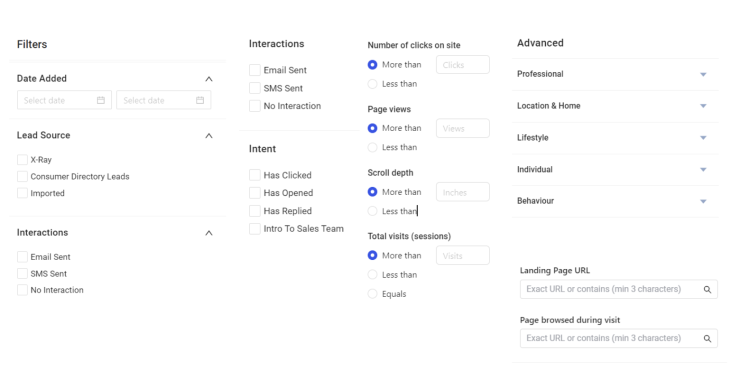Personalized marketing has become a necessity for brands to stand out and captivate their audiences.
Generic, one-size-fits-all campaigns simply won’t cut it anymore.
Consumers expect brands to deeply understand their unique needs and preferences.
That’s where customer segmentation comes into play.
By dividing your audience into distinct groups based on shared traits, you can tailor your marketing efforts and deliver highly relevant messaging that truly resonates.
What is Customer Segmentation?
Customer segmentation is the process of dividing your customer base into smaller subgroups that share similar characteristics, behaviors, or needs.
The goal is to identify the distinct personas within your audience so you can craft targeted campaigns for each segment.
Rather than blasting the same generic message to everyone, segmentation allows you to personalize your marketing approach.
You can develop tailored products, messaging, offers and experiences that speak directly to the wants and pain points of each customer group.
There are many different factors you can use to segment customers, such as demographics, geographic location, purchase history, interests, behaviors and more. The specific variables you choose depend on your unique business goals and the marketing objectives you aim to achieve.

For example, an ecommerce fashion brand might segment customers by gender, age range, location, style preferences, and purchase frequency. With these insights, they can promote different product lines, targeted sale offers, and relevant content to each distinct customer group. A software company, on the other hand, may segment by industry, company size, user roles and subscription tiers to deliver tailored product updates and support resources.
The key benefit of segmentation is boosting engagement, conversions and customer lifetime value by delivering hyper-relevant messaging and experiences. But it also provides invaluable insights that inform smarter product development, pricing strategies, customer support and the overall brand experience.
How to Identify Customer Segments
Now that you understand the “what” behind customer segmentation, let’s dive into the “how.” Here are some proven strategies to identify and analyze your core customer segments:
-
Analyze Your Data
The first step is to analyze your existing customer data sources to spot patterns and trends. Look at factors like demographics, purchase behavior, engagement levels, support inquiries, and feedback. Identify which characteristics and behaviors tend to cluster together into distinct groups. -
Survey Customers Directly
While quantitative data provides a solid foundation, surveys allow you to gather rich qualitative insights directly from customers. Ask about their goals, challenges, preferences, and perception of your brand. This voice-of-customer feedback is invaluable for validating your segments and personas. -
Research Your Competitors
It’s likely that your competitors’ customers are similar to your own in many ways. Researching their documented marketing personas and customer segmentation strategies can provide inspiration and validation for your own efforts. -
Leverage AI-Powered Segmentation
Sophisticated AI and machine learning platforms like Customers.ai can analyze vast amounts of customer data to automatically surface meaningful segments in an unbiased way. This removes manual guesswork and surfaces hidden insights buried in your data. -
Implement Continuous Testing & Iteration
Customer segmentation isn’t a one-and-done process. Your audience’s needs and preferences are constantly evolving, so you need to continually test your hypotheses, measure performance, and iterate your segments over time based on results.
Key Takeaways
Mastering customer segmentation is essential for delivering personalized, high-converting marketing campaigns in today’s landscape. By dividing your audience into distinct, granular groups, you can:
- Develop tailored products, messaging, offers and experiences for each persona
- Boost engagement, conversions and customer lifetime value with hyper-relevant campaigns
- Gain deeper customer insights to inform product roadmaps and overall strategy
- Identify new opportunities for growth, optimization and differentiation
The most successful brands are the ones who truly understand their customers’ unique mindsets and can anticipate their needs before they arise. Leverage data analytics, customer feedback, competitive research, AI-powered segmentation, and continuous testing to stay ahead of evolving demands.
Customer segmentation is a powerful strategy, but it requires an iterative, data-driven approach.
By combining quantitative and qualitative inputs, you can develop rich customer profiles that unlock personalization at scale.
With the right insights and willingness to evolve, you can capture loyalty and thrive in an era of unprecedented choice.
FAQs
-
What are the benefits of customer segmentation?
Customer segmentation allows businesses to deliver highly personalized marketing campaigns tailored to each group’s unique needs and preferences, boosting engagement and conversions. -
How do you identify customer segments?
Common strategies include analyzing customer data, surveying customers, researching competitors’ segments, leveraging AI segmentation tools, and continuously testing and iterating based on performance. -
What factors can be used for customer segmentation?
Demographic traits like age and gender, geographic location, purchase history, interests, behaviors, and pain points are all commonly used for segmenting audiences. -
How does customer segmentation improve marketing ROI?
By understanding distinct customer personas, brands can create hyper-relevant messaging, products, and offers that resonate – driving higher engagement, sales, and ROI. -
Why is continuous iteration important for customer segmentation?
Customer needs and behaviors are always evolving, so businesses must consistently test segment hypotheses, measure results, and update their segmentation models over time. -
What role does AI play in customer segmentation?
AI and machine learning enable automated analysis of vast customer datasets to surface meaningful segments and uncover hidden insights that manual efforts may miss. -
How can small businesses leverage customer segmentation?
Even with limited resources, small businesses can segment based on simple factors like purchase data, demographics, and survey feedback to improve personalization. -
What are examples of effective customer segmentation strategies?
E-commerce brands often segment by style interests, retailers by loyalty status, and SaaS companies by business size or user roles. -
How does customer segmentation inform product development?
By understanding key customer personas and their distinct needs, businesses can develop products and features tailored to each important segment. -
What data sources are used for customer segmentation models?
Common data sources include website analytics, CRM data, transactional records, social media activity, survey responses, and other customer touchpoints.

